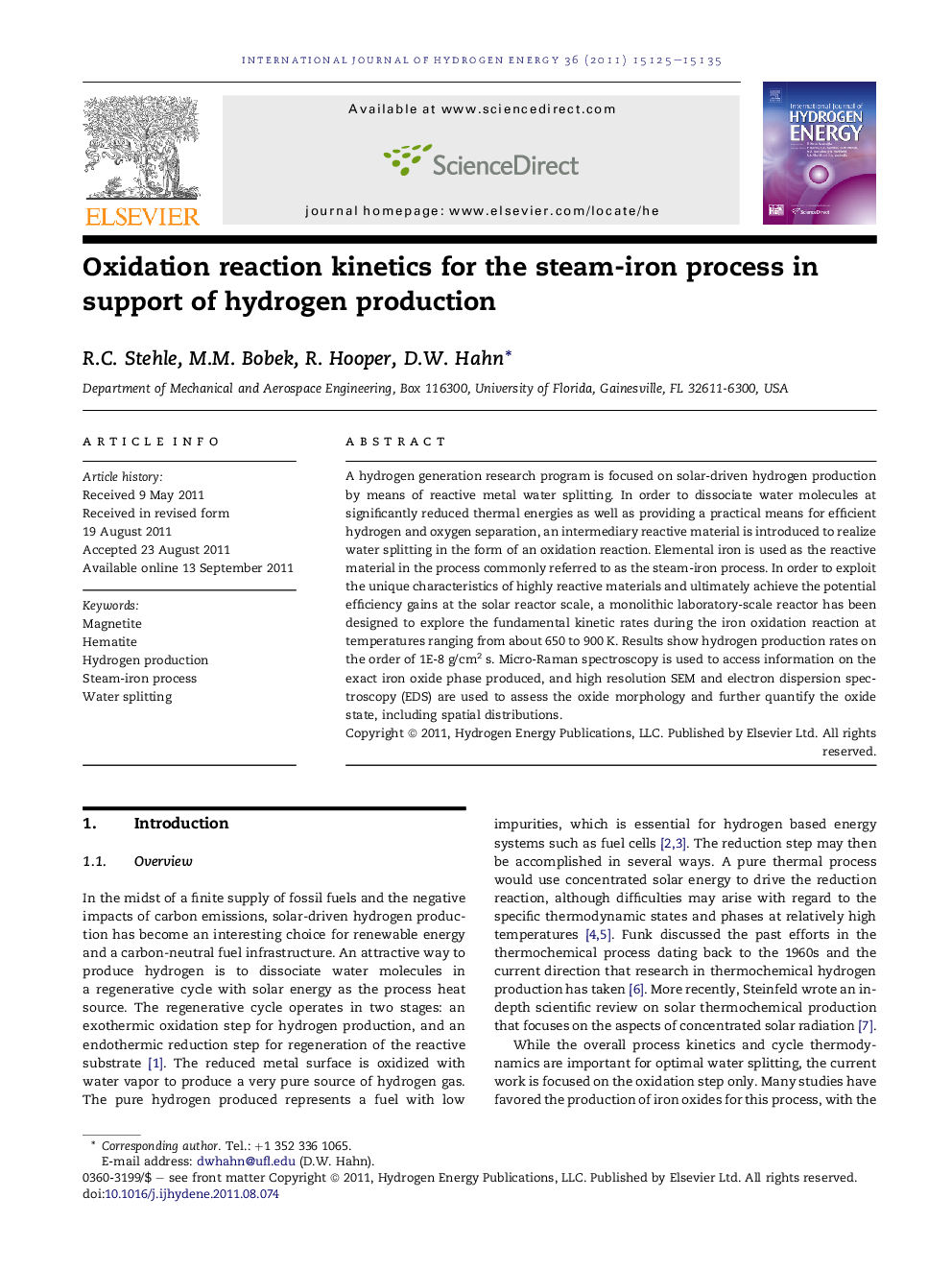| Article ID | Journal | Published Year | Pages | File Type |
|---|---|---|---|---|
| 1271804 | International Journal of Hydrogen Energy | 2011 | 11 Pages |
A hydrogen generation research program is focused on solar-driven hydrogen production by means of reactive metal water splitting. In order to dissociate water molecules at significantly reduced thermal energies as well as providing a practical means for efficient hydrogen and oxygen separation, an intermediary reactive material is introduced to realize water splitting in the form of an oxidation reaction. Elemental iron is used as the reactive material in the process commonly referred to as the steam-iron process. In order to exploit the unique characteristics of highly reactive materials and ultimately achieve the potential efficiency gains at the solar reactor scale, a monolithic laboratory-scale reactor has been designed to explore the fundamental kinetic rates during the iron oxidation reaction at temperatures ranging from about 650 to 900 K. Results show hydrogen production rates on the order of 1E-8 g/cm2 s. Micro-Raman spectroscopy is used to access information on the exact iron oxide phase produced, and high resolution SEM and electron dispersion spectroscopy (EDS) are used to assess the oxide morphology and further quantify the oxide state, including spatial distributions.
► Water splitting for renewable energy. ► Steam-iron cycle for hydrogen production. ► Kinetics control the reaction rate for steam-iron. ► Magnetite as dominant oxide phase. ► Water dissociation is the limiting step.
